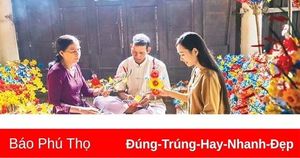A new book shedding light on Moroccan artist Miloud Labyadh is making waves in the art community, opening up Moroccan culture to a diverse cultural spectrum. The book, which highlights Labyadh's significant contributions to contemporary art in Morocco, is being lauded for its depth and cultural richness.
Published on May 6, 2025, this work is not just an exploration of Labyadh's artistic journey; it also serves as a broader commentary on the state of Moroccan art. The author emphasizes that Miloud Labyadh is one of the most prominent figures in the contemporary art scene in Morocco and a pillar upon which the artistic practice is based. The book's value lies in its dual focus: it is large in subject matter and distinguished in cultural diversity.
In addition to celebrating Labyadh's art, the book seeks to document the beauty and history of his life, aiming to revive an artistic narrative that has been somewhat forgotten. As the author points out, "The book includes an in-depth investigation of Fahm and reflects Miloud Labyadh's visions and Fahm's fundamental aesthetics upon which his art is based." This thorough investigation is crucial for understanding the foundations of Labyadh's work.
Furthermore, the book is considered a significant step in documenting Moroccan art history, which has often been overlooked in favor of written culture. The author previously explored similar themes in works about other Moroccan artists, such as Fouad Belamine and Jalili Al-Gharbaoui. Through this new publication, the author aims to shed light on Labyadh's artistic experience, which deserves recognition and appreciation.
On a different note, Dr. Riham Al-Raghib, an artist and researcher, has recently published a significant study titled "Restoring the Recycling of Art in Plastic Art" in the Egyptian Journal for Specialized Studies. This research is considered a vital step towards utilizing natural resources to produce artistic works that enhance cultural identity and environmental awareness.
Dr. Al-Raghib's research focuses on the potential of the palm tree in post-modern arts and critiques the aesthetics of plastic works produced from recycled natural materials. She highlights the palm's importance in the Arab world from various perspectives, emphasizing its potential as a sustainable resource.
In her findings, Dr. Al-Raghib states, "There is a vast difference between these industries and the artistic work as a product and creator. The consumer goods manufactured and sold are crafted by artisans, while the artistic work produced from the palm does not relate to those goods." This distinction is crucial for understanding the artistic value of works created from natural materials.
The study also includes critical analyses of collective art and land art, drawing on the works of Emirati artist Muhammad Youssef as a case study for utilizing palm materials in artistic endeavors. Dr. Al-Raghib encourages cultural institutions in Kuwait to adopt a national project dedicated to recycling into plastic art. She believes such initiatives would align with the goals of Kuwait Vision 2035, promoting sustainability and innovation.
Dr. Al-Raghib's research underscores the importance of transforming waste into valuable resources, focusing on the artistic potential of the palm tree, which is abundant not only in Kuwait but across the Arab world. She asserts that recycling palm waste into artistic materials can significantly reduce waste problems in the region while enhancing cultural identity.
As both the book on Miloud Labyadh and Dr. Al-Raghib's research highlight, the intersection of art, culture, and sustainability is becoming increasingly relevant. These works not only celebrate individual artists and their contributions but also advocate for a broader appreciation of the cultural narratives that shape the artistic landscape in Morocco and the Arab world.
In conclusion, the exploration of Moroccan contemporary art through the lens of Miloud Labyadh's work and the innovative use of palm materials in post-modern arts by Dr. Riham Al-Raghib exemplify the rich tapestry of cultural expression in the region. As these narratives gain recognition, they pave the way for a more profound understanding of the artistic heritage and its potential for future generations.




